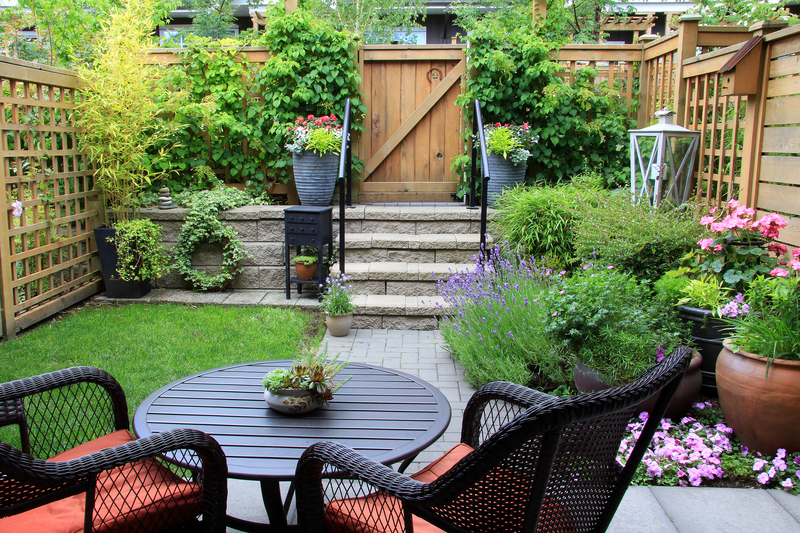Green Hands on Deck: Gardening as Climate Aid
Posted on 18/08/2025
Green Hands on Deck: Gardening as Climate Aid
Climate change remains an urgent global issue, compelling individuals, communities, and policymakers to explore both large-scale and local solutions. While renewable energy, sustainable transport, and conservation efforts play major roles, an often-overlooked ally is right beneath our feet: gardening. In recent years, the powerful notion of “Green Hands on Deck” has gained momentum, highlighting how gardening can significantly aid in climate action. This article dives into the multifaceted ways personal and community gardening not only provides food and beauty but also becomes a pivotal climate aid tool.
Understanding Gardening as a Climate Solution
The conversation around climate change mitigation tends to focus on industrial actions. However, grassroots efforts like ecological gardening can have a tremendous impact. By increasing urban green spaces, promoting soil health, capturing carbon, and supporting biodiversity, gardening emerges as a frontline climate aid strategy accessible to nearly everyone.
How Gardens Fight Climate Change
- Sequestering Carbon: Healthy plants and soils trap atmospheric carbon dioxide, a leading greenhouse gas.
- Cooling Urban Areas: Vegetation reduces the urban heat island effect, lowering city temperatures.
- Reducing Food Miles: Homegrown produce decreases the carbon emissions from transporting food over long distances.
- Boosting Biodiversity: Gardens provide vital habitats for pollinators and other beneficial species.
- Improving Air and Soil Quality: Plants filter pollutants and enrich soils, contributing to ecosystem health.
Adopting eco-friendly gardening practices on a small or large scale can yield benefits for the environment and personal well-being, underlining the rallying cry of “Green Hands on Deck”.

What is Climate Aid? The Gardening Connection
Climate aid refers to actions and systems designed to reduce greenhouse gas emissions and help societies adapt to changing climate patterns. Traditionally, it has involved policy, financial investments, and technology. However, there is growing recognition that nature-based solutions--such as the simple act of gardening--can form part of an effective climate response.
By growing your own food, improving soil, capturing rainwater, and composting, gardens become micro-climate solutions. These activities support the planet’s resilience and offer immediate, local benefits:
- Enhanced water management
- Lowered lawn-related emissions
- Waste reduction through composting
- Vegetable garden carbon capture
- Urban biodiversity corridors
The Power of Plants: Carbon Sequestration in the Garden
Carbon sequestration is the process of capturing and storing atmospheric carbon dioxide. Plants--especially trees, shrubs, and deep-rooted perennials--are experts at this task. Through photosynthesis, they pull in CO2 from the air, using it to build their tissues and transferring much of that carbon into the soil.
Maximizing Carbon Capture in Your Backyard
- Plant Trees and Bushes: Even one tree on your property can store hundreds of pounds of carbon during its lifetime.
- Go Perennial: Perennial vegetables, herbs, and flowers keep roots in the ground year-round, fostering ongoing carbon capture.
- Use No-Dig Methods: Tilling exposes soil carbon to air, causing it to dissipate. No-dig or low-till gardening preserves soil structure and its ability to store carbon.
- Grow Cover Crops: Plants like clover or vetch keep your soil living and carbon-rich between food crops.
Community gardens, school gardens, and urban food forests amplify these effects when multiplied across neighborhoods and cities.
Urban Greening and the Heat Island Effect
Urban areas are notorious for their “heat island” phenomenon, where concrete and asphalt trap heat, pushing city temperatures far above those of surrounding rural areas. Integrating more plant life through home gardens, rooftop gardens, and green walls can make a dramatic difference.
Gardening as Urban Climate Aid
- Refresh Air Quality: Plants act as nature's filters, removing toxins and producing oxygen.
- Reflect Solar Energy: Leafy canopies and green spaces reflect sunlight, reducing local temperatures.
- Shade and Insulation: Strategic plantings around homes reduce the energy demand for cooling by shading windows and walls.
- Stormwater Absorption: Gardens and rain-absorbing landscapes minimize flooding, capturing water that hard surfaces would force into drains.
Each new patch of green is a direct, visible action against the warming effects of climate change in urban environments.
Sustainable Gardening Practices for Climate Resilience
For gardens to truly function as climate aid, sustainable techniques are crucial. Here are methods that amplify the benefits for both the gardener and the environment:
Regenerative Gardening and Soil Health
-
Composting:
- Transforms kitchen and yard waste into nutrient-rich humus, improving soil fertility and structure.
- Cuts down on methane emissions from landfill waste.
-
Mulching:
- Suppresses weeds, retains moisture, and stabilizes soil temperature.
- Encourages healthy microbes and invertebrates, further enriching the soil and locking in carbon.
-
No-Till Gardening:
- Supports vital fungal networks and soil organisms.
- Reduces soil erosion and promotes ongoing carbon storage.
-
Water-Wise Techniques:
- Use rain barrels, drip irrigation, and drought-resistant plants to conserve water.
Implementing these eco-friendly gardening measures forms the backbone of gardening as climate aid.
Growing Food, Growing Resilience
Home and community food production play a vital role in reducing the carbon cost of the food system, which is responsible for a significant share of global emissions. The more food we grow locally, the less we rely on long-distance trucking, packaging, and refrigeration.
Benefits of Edible Gardening for the Planet
- Slashes Food Miles: Every tomato or bean grown at home is one less transported across the country or globe.
- Prevents Food Waste: Fresh-picked produce lasts longer, and gardeners are more likely to compost scraps, creating a closed nutrient loop.
- Reduces Packaging: Directly harvested fruits and vegetables need no plastic wrap, bags, or trays.
- Encourages Healthier Diets: Greater access to fruits and vegetables improves nutrition and overall well-being.
Communities seeing food deserts replaced by gardens are experiencing not just better health, but a vital drop in their carbon footprints. Green hands on deck means more homegrown food for everyone, supporting both planetary and human resilience.
Gardens as Biodiversity Havens
Biodiversity is under threat worldwide, and yet, gardens offer sanctuaries for many creatures crucial to ecosystem balance and resilience. From pollinators like bees and butterflies to beneficial insects, birds, and amphibians, diverse gardens bolster populations that support agriculture and natural landscapes alike.
How to Enhance Biodiversity Through Gardening
- Plant Natives: Native plants provide food and habitat for local wildlife.
- Mix Flowering Species: A succession of blooms supports pollinators year-round.
- Create Water Features: Small ponds or birdbaths draw in creatures that add complexity to your garden’s ecosystem.
- Shrubbery and Shelter: Dense bushes, dead wood piles, and compost heaps give wildlife safe places to thrive.
Healthy habitats sequester more carbon, absorb more water, and provide crucial ecosystem services. Boosting biodiversity through gardening as climate action is a win-win for the earth.
Community Gardens: Scaling Up Climate Impact
When individuals join together to garden at scale, the positive climate impacts multiply. Community gardens, allotments, and cooperative urban farms foster food security, environmental education, and neighborhood pride while amplifying the environmental benefits.
Why Community Gardening Matters for Climate Aid
- Greater Carbon Capture: Larger shared plots grow more plants and keep more soil protected.
- Education: Teaches sustainable skills and environmental stewardship.
- Social Support: Reduces isolation and spreads climate awareness through shared action.
- Resource Efficiency: Communities can share tools, seeds, compost, and water strategies more efficiently than individuals alone.
The power of green hands on deck magnifies as communities unite, creating impact at the city, region, and even national scale.
Innovative Approaches: Tech in Gardening for Climate
The intersection of technology and gardening opens further possibilities for climate aid. Smart irrigation, climate modeling, and even AI-driven compost systems enable gardeners to maximize their positive environmental impact with precision:
- IoT Sensors: Help monitor soil moisture, ensuring optimal watering and water conservation.
- Vertical Gardening: Uses less land, water, and fertilizer while still sequestering carbon.
- Remote Garden Planning Tools: Help gardeners choose the best plants for local climates, increasing success and resilience.
Modern innovations, combined with age-old wisdom, light the way for climate-smart gardening that supports both people and the planet.

Getting Started: Your Steps Toward Gardening for Climate Aid
Anyone can contribute to climate action through gardening, regardless of experience or available space. Here are practical first steps to put your own green hands on deck:
Simple Actions for Powerful Climate Aid
- Start Small: Sow a few vegetable seeds, plant a tree, or install a window box of herbs.
- Compost: Begin saving your kitchen scraps for a compost pile or worm bin, returning nutrients to the earth.
- Go Native: Replace exotic or decorative plants with native species that enhance local biodiversity and resilience.
- Join a Community Garden: Learn from others, share resources, and multiply your impact.
- Educate and Engage: Teach your neighbors, friends, and children about sustainable gardening and its climate benefits.
Remember: Every plant you nurture, every handful of compost you create, and every drop of water you conserve brings us one step closer to a healthier, more stable planet.
Conclusion: Cultivating Hope, One Garden at a Time
As the world grapples with the challenges of climate change, solutions must come from every direction--and especially from the ground up. Green Hands on Deck isn't just a catchy slogan but a rallying cry for a regenerative, hopeful approach to climate aid.
By transforming our yards, balconies, and communities into lush, living landscapes, we are simultaneously capturing carbon, cooling our cities, boosting food security, enriching biodiversity, and nurturing the human spirit. Gardening as climate aid empowers each of us to be agents of change: because every seed sown is a pledge for a brighter, greener future.
So roll up your sleeves, get your green hands on deck, and let's garden our way to a healthier planet.



